(UPDATED APRIL, 2023)
So you’re thinking of visiting Lake O’Hara, one of THE very best places in the entire Canadian Rockies for hiking and/or photography! Well you’ve come to the right place! This is the first of a 4 part series highlighting some special features and information on the Lake O’Hara area in British Columbia’s, Yoho National Park.
If you came here to book a 2023 guided photography trip to Lake O’Hara then check our availability for spots on July 15th and September 24th here first. Hurry they go quick!
GETTING THERE
First of all how do you get there? It seems tough and you probably don’t know where to start – but read on and follow some of the links I’ll provide you so that you can be on your way. Your options are reserving a day trip, reserved camping, a reserved ACC Hut stay, reserved cozy lodge accommodations or walking in.
The latest information can be found here at the link below:
https://www.pc.gc.ca/en/pn-np/bc/yoho/activ/randonnee-hike/ohara
I’ve managed to visit this area which is notoriously hard to get a booking at nearly every year for the past 15 years. Sometimes I’m lucky with the online reservation system but most often I now visit as a commercial guide bringing small groups of people to this special region. if I’m looking for a hut reservation, sometimes I’ve been lucky in the Alpine Club of Canada’s Elizabeth Park Hut lottery which opens WAY in advance too.

Your other option is to book in at the luxurious Lake O’Hara Lodge but the wait list is extreme. More information here: www.lakeohara.com

ALTERNATIVES
Walk in via the 11km access road (Warning: Very limited views along the entire roadway which doesn’t give you much of a sense of wilderness that you are probably looking for in the National Parks). I haven’t done this but I have instead walked in via Wenkchemna/Opabin Passes a couple of times but this requires glacier travel and is not recommended unless you have the training, equipment and partners. The road is not recommended either unless your like punishing your legs before the good hiking starts and there are no guarantee’s you will be able to take the bus out at your preferred time as you won’t have preference over campers. Bring cash to cover this bus ride – $10 one way if you are going to take a gamble on getting a ride out at the end of the day.
Ultimately, you’re better off waiting until you can get a booking and exploring something nearby like The Iceline Trail or taking a guided trip to The Burgess Shale or Mt Stephen Fossil beds – all of these are also located in beautiful Yoho National Park too and offer good alternatives should your Lake O’Hara plans fall through.
PRO TIP
If you are still finding it hard to get a booking in at the Lake O’Hara area, call in on 1-250-343-6433 the day before you want to go if camping and hope there has been a cancellation. This happens occasionally especially on average weather days. I can almost guarantee you will have luck in the fall with this approach when it gets colder and the first snowfalls start happening. You can find a list of available dates in real time here via the availability report https://www.pc.gc.ca/apps/tcond/cond_e.asp?oPark=100438 before calling – and call as soon as the phone lines open for the day at 8am MST (Mountain Standard Time) to increase your chances.
HIKING IN THE LAKE O’HARA AREA
So when the booking is out of the way, and you have made it through – what next? Where should I go first? What’s to see? Lots!! Below is a map of the core Lake O’Hara area to start to get yourself orientated, and for an idea of the hiking distances and terrain you will encounter. Click the map for a closer look.

You can segment the core area into 3 (or 4) smaller zones to break it down.
- Lake MacArthur (This includes Schaffer Lake and The Odaray Grandview)
- Lake Oesa (Most popular day trail which includes Lakes Victoria and Lefroy)
- The Opabin Plateau (You can get lost in here – allot as much time as you can to being here exploring especially in autumn)
- Morning Glory, Linda & Cathedral Lakes (Quieter forested trails and interesting tarns – good for a rainy day or finding wildflowers)
Its overwhelming trying to see it all so I like to break it down into these segments and then choose based on time and weather. My favourite trail in the area is ‘The Yukness Ledges’ which connects Lake Oesa with the Opabin Plateau. Below are some of the images you can come away with in the Lake O’Hara core area if you look around.
If you like to scramble I can recommend Mt Yukness or Mt Schaffer but make sure you have done your research and know your limits. They can both be very serious in bad weather or if you get off route. The Wiwaxy Peaks are a more challenging scramble/climb and mountaineering routes abound with spaces on the bus set aside for those with mountaineering objectives requiring an overnight bivy like Mt Hungabee (Permits required!)
PHOTOGRAPHY TIPS WHILE AT LAKE O’HARA
- Bring your widest angle lens possible, ideally 16mm on a full frame (or 10mm on a crop sensor camera) or even wider. The Valley’s are deep at O’Hara and the peaks tower over you so it’s nice to be able to fit more in here. If your lenses aren’t this wide make sure you learn how to do some simple panoramic stitching of frames before arriving so you can overcome this limitation if you want to (using Lightroom or Photoshop to stitch the frames later on)
- This side of the continental divide can get ‘socked in’ more than the Alberta side so make sure you are ready for rain, snow or grey days and don’t be discouraged if it is like that – you need these conditions to occur for the dramatic storm clearings to happen. Be watchful for that especially at sunset. Also, check out Seven Veil Falls at the back of Lake O’Hara on days like this – lots of angles to work with.

- Pack that polarizer to get punch in your images out of the glacial lakes colour. The colour can be emphasized with it and it can help eliminate that glare off the waters surface if you want to for creative effect.
- Wildlife abounds – grizzly bears, wolverines, moose, hoary marmots and pikas are some of my favourite animals in this area. Keep your long telephoto lens handy but always give the animals space and observe them from a safe and non-intrusive distance. Snap a few pictures and move along!
As you can see this area is truly magical and you can even visit it throughout the winter! It is a popular ski in destination with people staying at The ACC Elizabeth Parker Hut and as the depths of winter loosens its grip they even open up some winter camping opportunities in the campground. Ski Tours can be found in the area and I highly recommend Chic Scott’s book, ‘Ski Trails in the Canadian Rockies’, for more information on that.

In the following parts to this blog series on Lake O’Hara I will explore Wolverines (part 2), Wildflowers (part 3), and the Alpine Larch Trees (part 4).

Guided day trips into the Lake O’Hara area
If you are interested in visiting the Lake O’Hara area on a day trip this summer then please get in touch using the form below. As a commercial guide I have the ability to book the bus if those allocated spaces are available – come and experience the area with me on July 15th or September 24th, 2023! Book Here or contact us below with any questions.

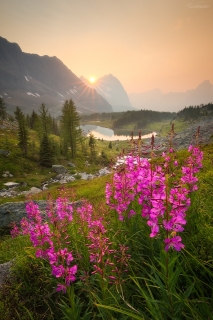
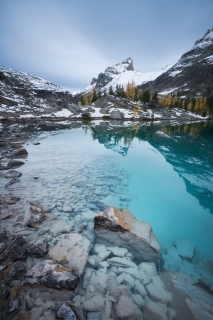
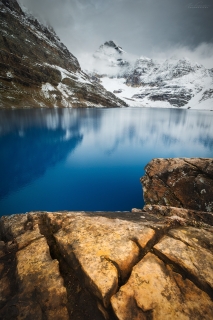
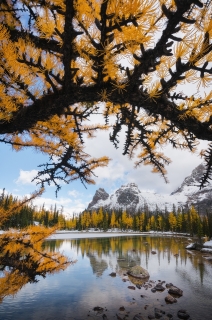
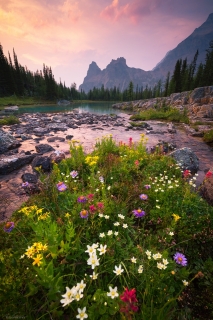
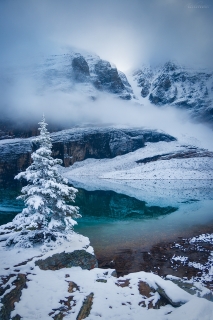
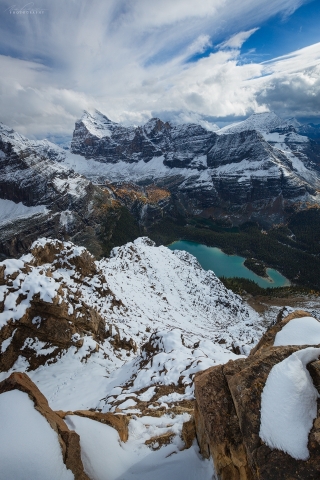
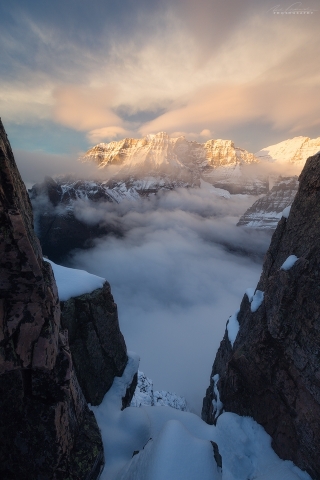
One Reply to “The Magic of Lake O’Hara – Part 1 (Getting there)”